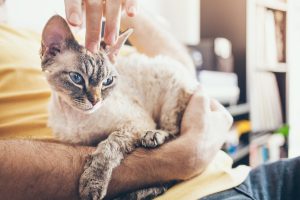
How a Cat Sitting Service Handles the Unexpected..
How a Professional Cat Sitting Service Handle Unexpected Situations
When you leave your beloved cat in the care of a professional cat sitting service, you trust them not just with feeding, litter box scooping and playtime, but also with your cat’s safety in unforeseen circumstances. Emergency preparedness is a crucial aspect of professional cat sitting. In this blog post, we’ll explore the measures and protocols professional cat sitting services follow to ensure the well-being of your feline friend in any emergency.
I get commissions for purchases made through links in this post. As an Amazon Associate I earn from qualifying purchases. You can read our disclaimer here.
Understanding the Role of a Cat Sitting Service in Emergencies
Professional cat sitters are trained to handle a range of unexpected situations, from medical emergencies to natural disasters. Their preparedness and response can make all the difference, ensuring the safety and comfort of your cat.
1. Medical Emergencies
Recognizing the Signs:
Cat sitters are skilled at recognizing early signs of medical distress, such as changes in eating habits, lethargy, or unusual behavior.
Immediate Response
They are trained to provide immediate first-aid if necessary and to contact a veterinarian promptly. They will also keep the owner informed while they are managing the situation, which is a priority.
Preventative Measures:
A professional cat sitter familiarizes themselves with the cat’s medical history, and any existing conditions. This is part of a sitter’s preparation before they begin caring for the client’s cat.
2. Natural Disasters and Home Emergencies
Preparation for Natural Disasters:
Professional sitters often have a disaster plan that includes safe relocation spots, emergency kits, and a list of emergency contacts.
Handling Home Emergencies:
In cases of power outages, water leaks, or other home-related emergencies, cat sitters know who to contact and how to secure the safety of the cat.
3. Preventing Escapes or Lost Cats
Preventive Strategies:
Ensuring all doors and windows are secure is a fundamental part of a cat sitter’s routine. They also assume that the cats in their care may be waiting at the door, plotting their escape, and take measures to prevent that from happening
Responsive Actions:
If a cat does manage to escape, sitters follow a set protocol that includes searching the area, contacting the owners, and notifying local animal services and shelters.
4. Owner Communication From Your Cat Sitting Service
Keeping Owners Updated:
Transparency and regular updates are essential, especially in an emergency situation.
Providing Assurance:
Sitters understand the importance of reassuring owners about their cat’s safety and the steps being taken.
5. Continuous Training and Education
Staying Informed:
Professional cat sitters often undergo continuous training to stay updated on the best emergency practices. This includes pet first aid/CPR training, as well as attending conferences and online training events to keep up with the latest practices.
Certifications:
Many hold certifications in pet first-aid and emergency response.
Conclusion
Having a professional cat sitter means entrusting your cat to someone equipped to handle emergencies with calmness and competence. It’s not just about feeding and cuddling – it’s about providing comprehensive care that includes being prepared for the unexpected. When choosing a cat sitter, always inquire about their emergency preparedness strategies to ensure peace of mind while you are away.
We encourage all pet owners to have a pet first aid kit on hand for those unforeseen emergencies that arise while you are home. You can check the prices on Amazon.
If you would like to learn more about our cat sitting services, click here.
Note: As An Amazon Associate I earn from qualifying purchases.
